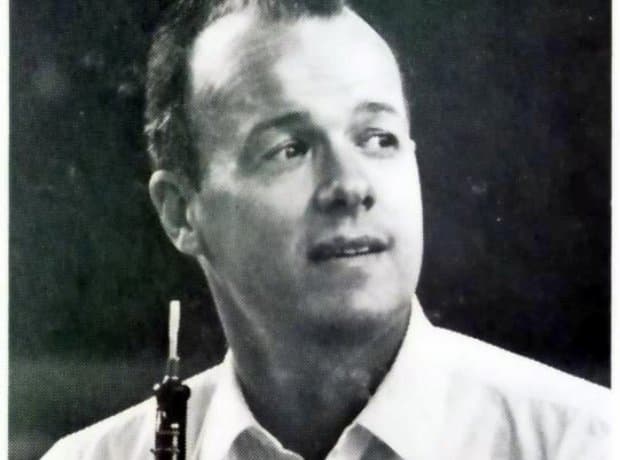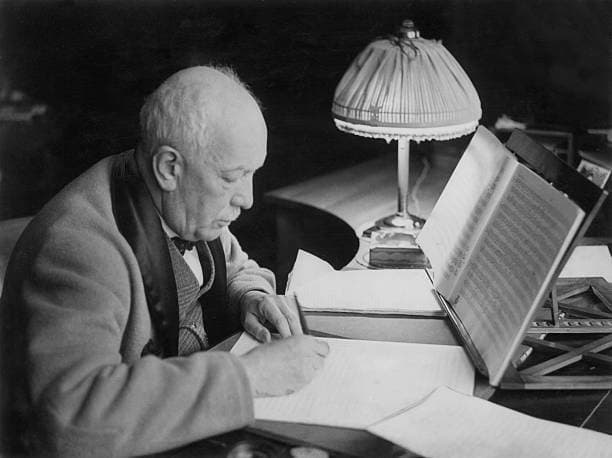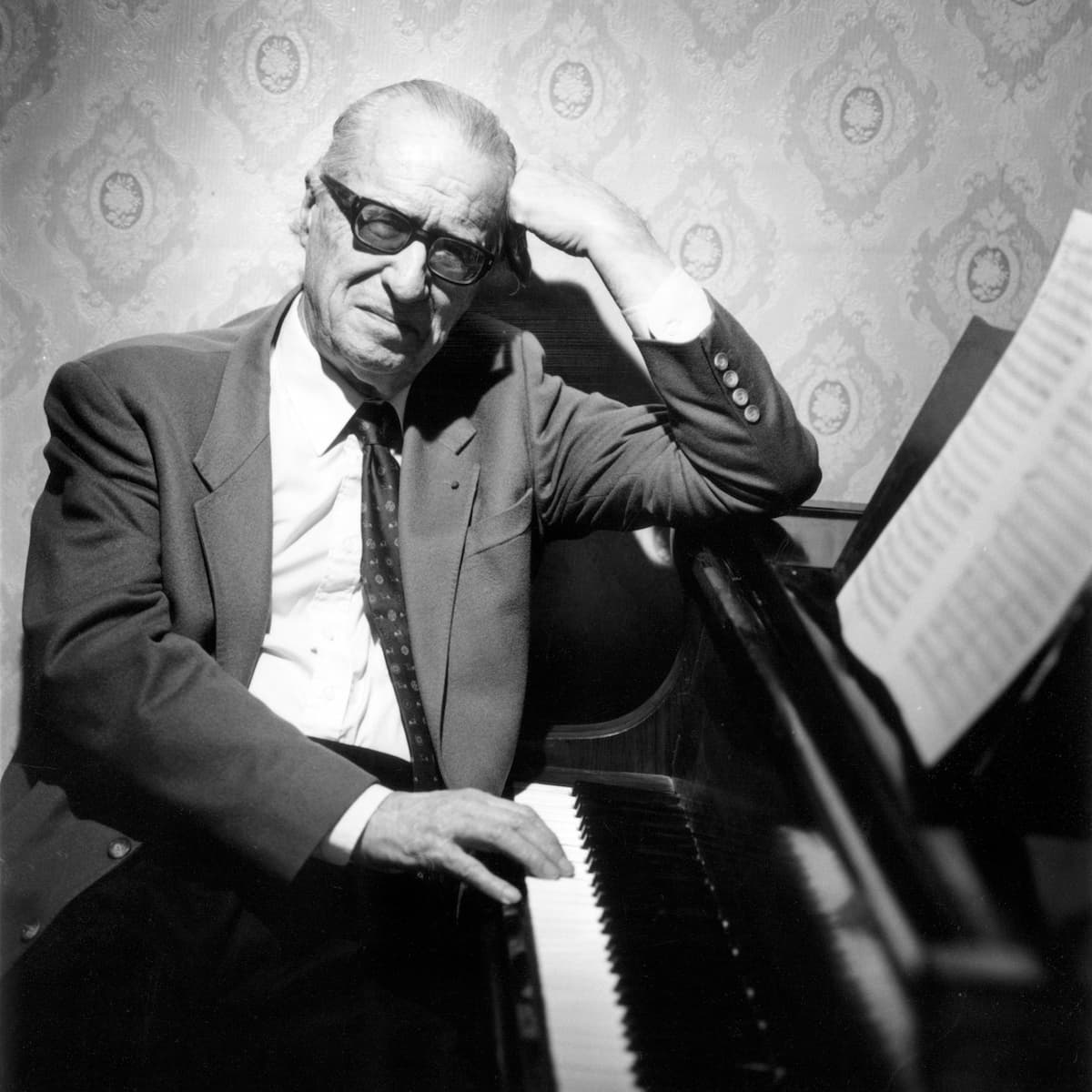Sergeant John de Lancie, born on 26 July 1921 in Berkely, California, eventually became the principal oboist of the Philadelphia Orchestra. However, his greatest claim to fame dates from the time he was stationed in the village of Garmisch Partenkirchen after World War II. The oboist, gleefully ignoring the strictly enforced non-fraternization policies of the occupying Allied forces, frequently visited the home of Richard Strauss. The 81-year-old composer, apparently intrigued by de Lancie’s suggestion of writing a concerto for oboe and orchestra, swiftly set to work and fashioned a delightful and graceful conversation between soloist and orchestra.
Richard Strauss: Oboe Concerto in D Major, TrV 292 (John deLancie, oboe; Chamber Orchestra of Philadelphia; Max Wilcox, cond.)
Premieres

John de Lancie
John de Lancie only learned later that Strauss had begun work on an oboe concerto because of the inscription on the autograph score, which reads “a suggestion from an American soldier.” Strauss did invite de Lancie to the world premiere, which took place in March 1946 in Zurich. Although de Lancie was in Switzerland at the time of the invitation, he had planned to leave in January to begin his work in Pittsburgh, so he had to decline.
Later on, de Lancie was offered the opportunity to play the American premier with the Philadelphia Orchestra. However, Marcel Tabuteau would not allow his assistant and student to play the first performance, angrily asserting, “If anyone is going to play, it will be the solo oboist of the orchestra.” De Lancie had better luck with his commission from Jean Françaix. De Lancie premiered L’horloge de Flore (The Flower Clock), scored for solo oboe with orchestra with Eugene Ormandy and the Philadelphia Orchestra in 1961.
John de Lancie performs Françaix: L’horloge de Flore (John deLancie; oboe; London Symphony Orchestra; André Previn, cond.)
Childhood and Study

Richard Strauss working in Garmisch-Partenkirchen
John Sherwood de Lancie was born into a family with some interest in music. His father was an electrical engineer and amateur clarinet player, while his brother played the violin. At the age of 14, he won an audition for the Philadelphia Orchestra, and he was also accepted to study oboe in the class of Marcel Tabuteau (1887-1966) at the Curtis Institute of Music in Philadelphia. Tabuteau‘s influence upon American musical pedagogy was enormous. Sometimes called the “father of the American school of oboe playing,” most of the professional oboe player in America were homegrown students of Tabuteau.

Jean Françaix
According to a colleague, John de Lancie had a formidable “and what I think of as Chopinesque finger technique. He used very little motion and a light touch so that the fastest passages came out cleanly and elegantly without any mechanical clatter whatsoever.” De Lancie performed with metrical, tonal, and articulative precision, building upon the standards Tabuteau had built with the Philadelphia Orchestra. As a teacher, de Lancie passed on the comprehensive instructions he received from Tabuteau.
Wolfgang Amadeus Mozart: Oboe Concerto in C Major, K. 271k / K. 314 (cadenza by J. de Lancie) (John deLancie, oboe; Philadelphia Orchestra; Eugene Ormandy, cond.)
Career

Marcel Tabuteau
John de Lancie was engaged as oboist with the Pittsburgh Symphony Orchestra between 1940 and 1942, before he was drafted into the U.S. Army as a member of the U.S. Army Band. He was sent to Algiers, to Eisenhower’s headquarters, and was subsequently employed by the Office of Strategic Services. De Lancie joined the Philadelphia Orchestra after World War II and served as principal oboist between 1954 and 1974.
He was not only one of the greatest virtuosos on his instrument, but also contributed to shape the sound of the orchestra. As his successor in the Philadelphia Orchestra, Richard Woodhams, related “you could immediately recognise it was the Philadelphia Orchestra from de Lancie’s oboe playing…It was sort of bright and dark at the same time, and had a kind of suppleness to it.” In 1977, de Lancie was appointed director of the Curtis Institute of Music, retiring in 1985.
In his later pedagogical career, de Lancie became increasingly disillusioned with academia. He felt that the performance requirements placed upon students each semester in terms of recitals and number of compositions studied did not allow for a methodical approach through the fundamentals and etudes. As he put it, “producing a greater number of players has led to a general lowering of standards in the American collegiate system. Sadly, listeners, conductors, critics, and administrations have come to accept lower levels of performance as adequate.”
For more of the best in classical music, sign up for our E-Newsletter
Jacques Ibert: Symphonie concertante (John deLancie; oboe; London Symphony Orchestra; André Previn, cond.)
